What are shower tanks and how to install them?

A shower tank is sometimes the only possible solution for a summer shower in a summer cottage. It allows you to use the shower cabin in conditions where a full-fledged bath has not yet been built. Often, a shower room is made on the street in the form of a capital structure that cannot be transferred - and a bathhouse is already being built around it.
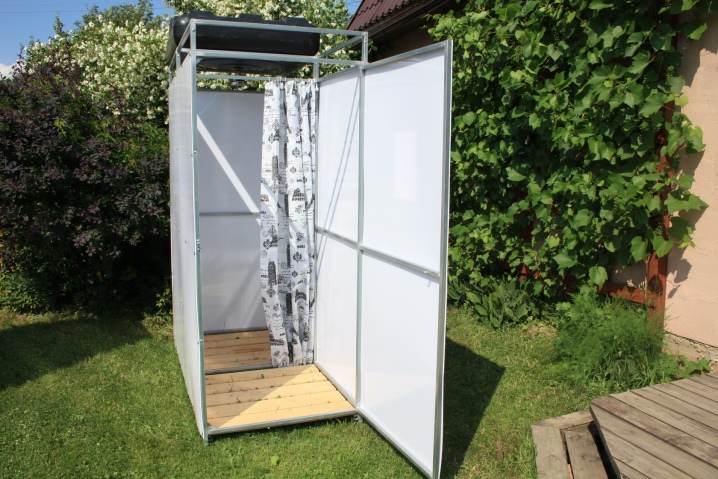
Views
In order for the shower to work fully, storage tanks for the shower are provided. The capacity for a summer cottage for the original shower, which would not have been considered as such without water supply, in the simplest case is a 50 liter container. This amount of water is enough for one person to fully wash without wasting water.

For long bathing procedures, this amount of water is not enough. For this, more spacious tanks are needed.
For a garden shower for several people, a boiler tank will be useful. A container with a heating element is suitable for taking a shower in cloudy weather, when there is almost no opportunity to heat the water using the solar heat, which is observed on hot and clear days. A more improved version is a heater with a thermostat that does not allow boiling (and boiling) of water, as a result - a possible explosion of the heating element, an accidental ignition of a plastic barrel, and with it the danger that the fire source will turn into a fire. The thermostat was created mainly for the busy or people whose forgetfulness is excessive.


The thermostat can be unregulated (like in a kettle - it turns off the switch when the water boils) and with an adjustable temperature (resembles an electromechanical switching element in an electric stove) - in fact, it is a full-fledged thermostat. Devices equipped with an electronic thermostat are electric water heaters of a capacitive type. They do not belong to simple bath tanks.

A tank with a watering can is a prefabricated set, which, in addition to the container, includes additional pipelines, possibly a shut-off valve with a watering can. A ready-made kit - a tank into which the inlet and outlet nozzles are already cut by the manufacturer. At the point of entry into the tank, rubber gaskets are inserted into the pipelines to prevent the leakage of the collected (and already collected) water. The simplest tank without heating, but with inlet and outlet pipelines, requires a pump connection. The water supply or "well", "well" line, equipped with a pump, additionally passes through an instantaneous water heater (gas or electric).
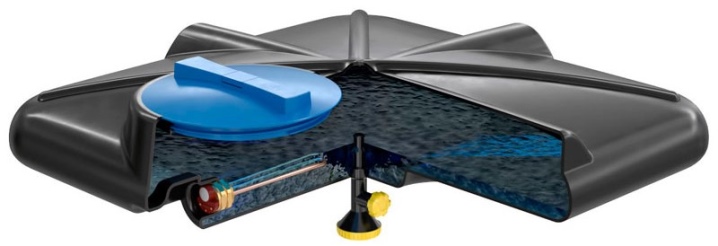
It is advisable to connect a shower mixer to the tank in which its own heating element is built - overheated water can be mixed with cold water that does not pass through the heating container.
It is preferable to choose a black tank by color. This can be a container made of high density polyethylene. Black polyvinyl chloride tanks are not very common - PVC is difficult to paint in this color. Namely, a black tank will save on gas / electricity in the summer: a completely blackened tank on a hot July day - in the conditions of the southern part of Russia - is capable of heating water almost to the state of boiling water - 80 degrees.

Then you will definitely need a mixer in the shower: 50 liters of heated water, which would be enough for one person, can be "stretched" for 2-3 people who want to wash after a busy working day, since hot water is diluted approximately 2 times, and from 50 liters of hot water you can get 100 or more liters warm (+38.5).For a summer cottage, a mixer and a black tank are a very worthy solution.
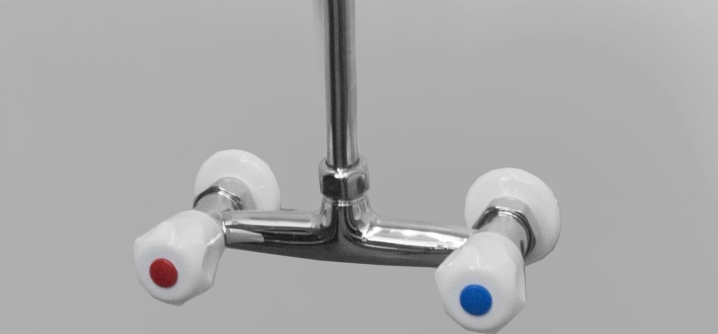
Metallic
A galvanized black steel tank is a low cost solution. The disadvantage of zinc coating is that water from a water supply system, well or well is not distilled. It contains a small amount of impurities - mainly salts. Zinc is a highly reactive metal, and at elevated temperatures (overheated water) it combines with salts.
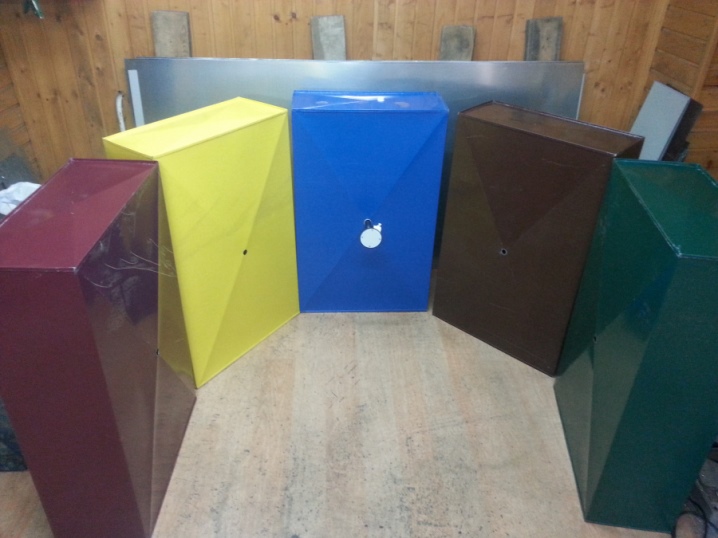
When a heating element is used in the tank, and the water is often heated significantly, noticeably higher than the temperature value, which a person regards as comfortable, zinc oxidizes, the coating gradually becomes thinner. Several years of active use - and the inner steel surface of the tank is exposed, it rusts, water begins to pass through. It is not recommended to purchase such a tank when a shower is being built, as they say, forever.

Stainless steel is a worthy solution. You just have to choose a container, the seams of which are made in an inert gas environment, for example, argon welding. If this technology is violated at the plant, then alloying additives, for example, chromium, are oxidized by oxygen at a temperature of about 1500 degrees and leave the material, which was originally produced as stainless steel sheet.
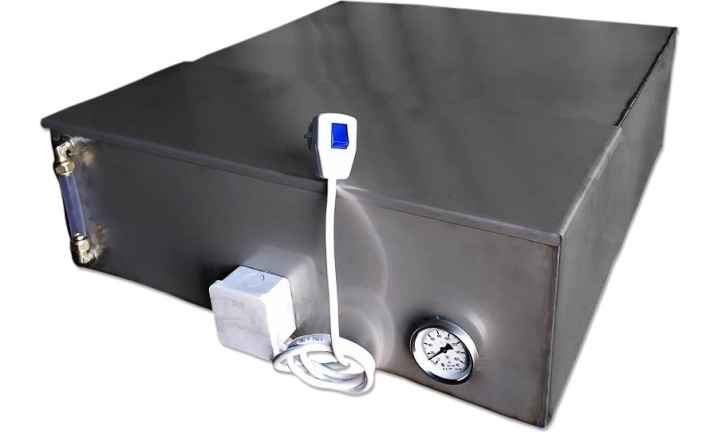
The steel modified in this way becomes ordinary (rusting), and at the seams (and next to them) such a tank in a short time turns into a "sieve" that allows water to pass through.
Make sure that you are buying a product about which the information is correct: the description must clearly indicate that the seams are welded in the presence of argon, otherwise such "stainless" steel will not last long. It will show itself as regular black (high carbon). If you come across a product about which some of the information is hidden, it is most likely a fake, or rather, an imperfection, an ordinary iron tank.
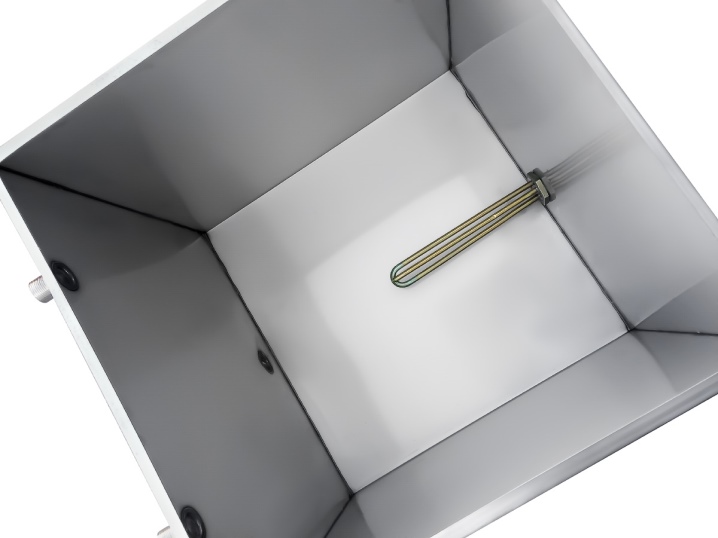
Plastic
The best plastic is the one that resists the damaging effects of ultraviolet radiation. After all, you will have it, most likely, not in a black steel "box", but without it - in direct sunlight. The following abbreviations help to determine how much the plastic you choose is susceptible to embrittlement:
- POM, PC, ABS and PA6 / 6 - after one to three years of daily exposure to the sun, they are destroyed;
- PET, PP, HDPE, PA12, PA11, PA6, PES, PPO, PBT - embrittlement with regular, daily (seasonal) UV exposure is considered equal to 10 years;
- PTFE, PVDF, FEP and PEEK - the destruction period takes about 20-30 years;
- PI and PEI - they will be enough for you practically for the whole life.
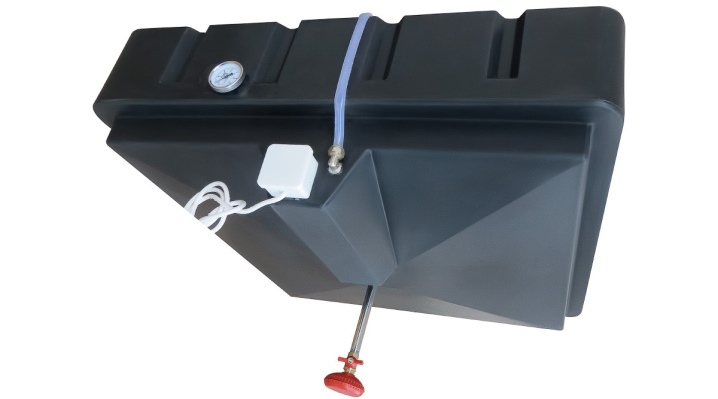
The most resistant to cracking and cracking are polyethylene and polypropylene. It is easier to damage tanks made of polystyrene: it is capable of scattering to pieces with a strong impact, while injuring a person in the soul when the fragments fly apart.
Separately, you should pay attention to the soft tanks, remotely resembling inflatable pillows. But, unlike air, they are pumped with water - according to the principle of action, they are brothers, for example, a hydropathic bed, an air mattress, and so on. Despite their relative stability and lightness - for the hinges, reinforced with steel riveted inserts, such a tank, for example, is hung on hooks, divorced at least in groups, in rows, on both sides of the container itself, - it is easy to accidentally pierce the tank, rip it open with something it is not very sharp. Due to their easy damage, soft tanks are not widely used - they are used mainly by lovers of long hikes, around the world (including cyclists).
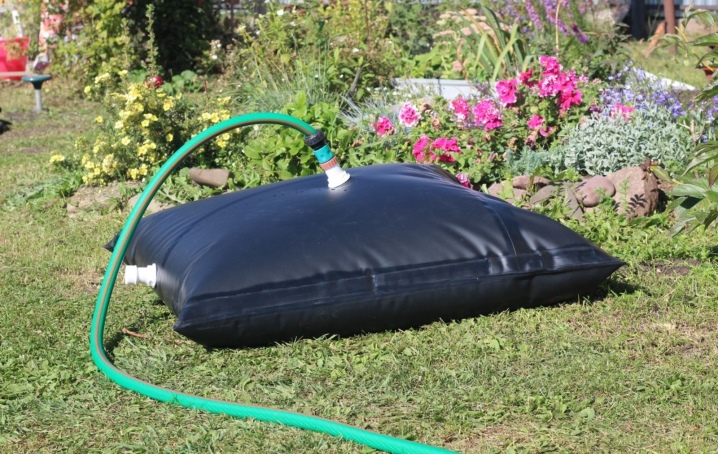
Shapes and sizes
The square tank is easy to install. Square tanks include flat tanks, vaguely resembling cans, as well as the so-called Eurocubes.
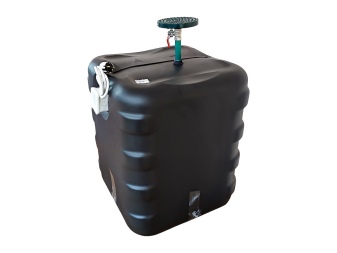
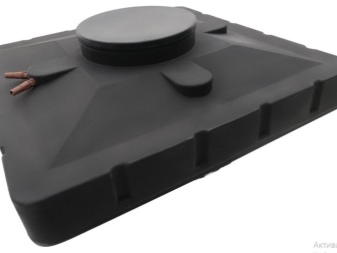
Rectangular tanks are more suitable for a shower room, whose ceiling (and floor) on the plan is not square (for example, meter by meter in size), but rectangular. This is a worthy solution for shower cabins with additional functionality (for example, transparent closing shelves for bath accessories) - say, on the plan, the size of a shower room is 1.5 * 1.1 m.
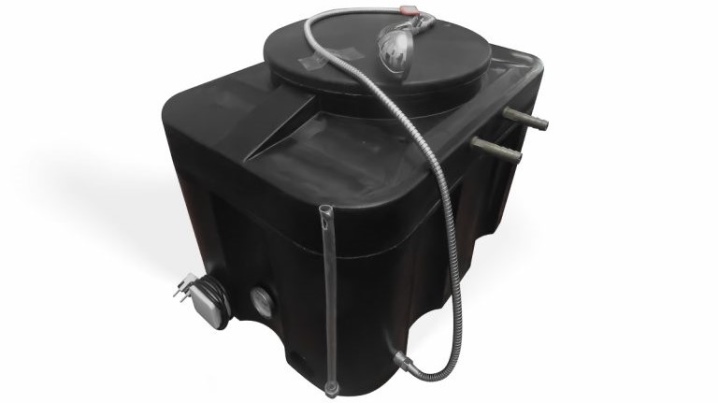
The flat tank is easy to install: often it does not require any additional fasteners. In the best case - a side up to several centimeters high (from the ceiling), excluding accidental displacement and drop of the container.
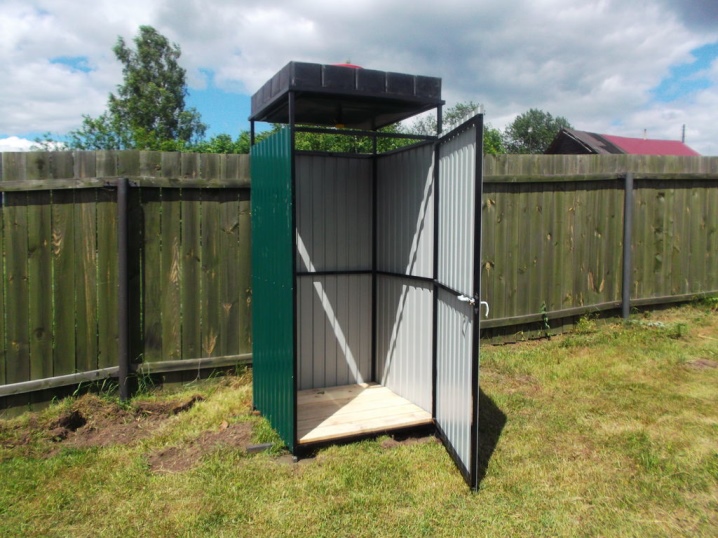
Typical sizes of square, barrel and rectangular tanks, including flat ones, are 200, 150, 100, 250, 110, 300, 50, 240, 120 liters. For owners of summer cottages, whose shower room is located directly in the main bathroom, which is part of the house (or an extension to it), a larger tank installed, for example, in a reinforced attic, erected from building materials, is suitable. capacity.

The tonnage of such a tank can reach up to 10 tons. - provided that the foundation is as deep as possible and reinforced with a basement under the house, the walls are probably made of the same reinforced concrete, and the floor is strong enough (with a margin of safety of at least 20 tons of weight). But such a colossus is a rarity for the average summer resident, since the structure should more resemble a bomb shelter with a bunker in its underground part, and not a simple country building.
As a rule, summer residents have tanks of several tons, for example, in the utility room, whose frame is built of 10-12 mm profiled steel and pipes with the same wall thickness. An error in the calculation and construction (for example, when welding) such a shower room can cost the summer resident his life - the structure, suddenly collapsing while he was inside, will fill him up.
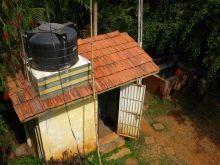
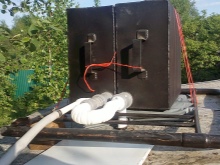
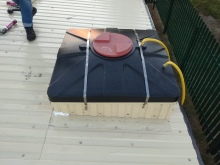
Review of the best manufacturers
Among the leading manufacturers of bath and shower tanks, the most common are: Rostok, Aquatek, AtlantidaSPB, Aquabak, Rosa, Alternative (the top for the last year or two, for example, included the M6463, M3271 models), Elektromash (with EVN - electric water heater), Polimer Group, Elbet (popular model - EVBO-55) and a number of others. Here are just a few of them.
- Rostok 250 l - contains a watering can in its configuration. Made from durable polyethylene (PE) with increased thickness, equipped with drainage in the lid.
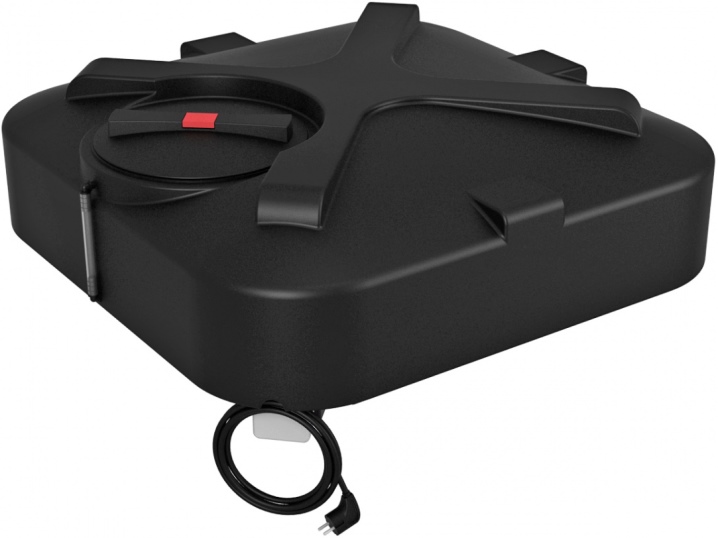
- Aquatek-240 black, size - 950x950x440. No ball valve included. Good for both the shower and the drip-irrigation system in the garden.
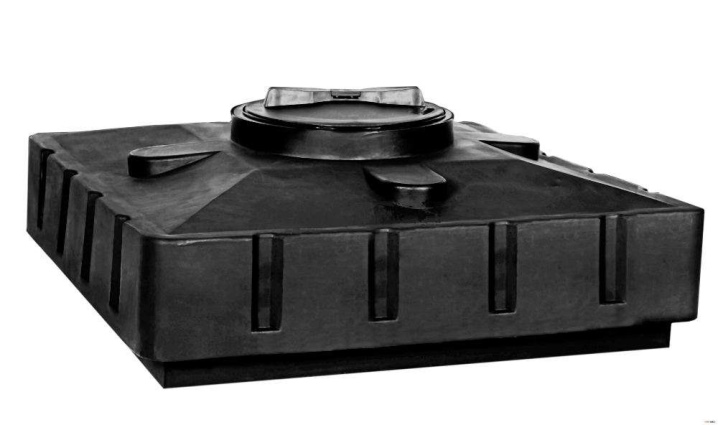
- Rostok 80 liters. Equipped with heating element. The set includes a mounting support. Rapid heating - up to 4 hours - of water to a hot state. Completely solve the problems of one-time water treatments after work. Alternative kits models - 200 and 250 liters.
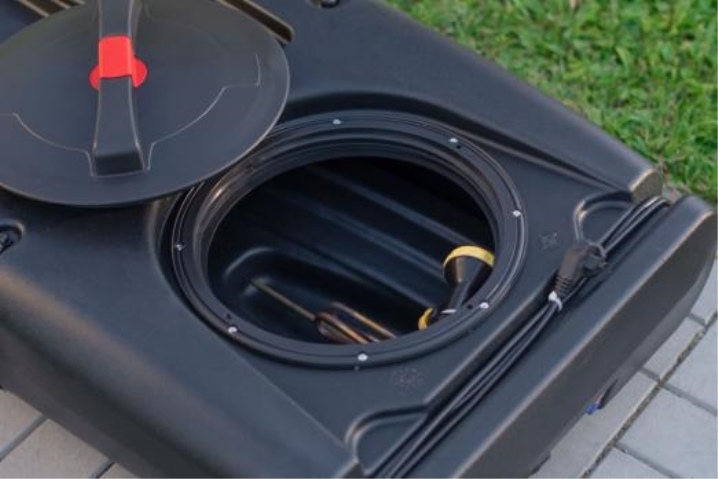
- Rostok 150 l - with a watering can, a branch pipe for filling water. The model is easy to install - without the need for assistance from outside assistants. Fast warming up on a sunny summer day. Its counterpart - the same model - has a level gauge. Another analogue - there is an extended filling gap for washing and washing in the tank itself.
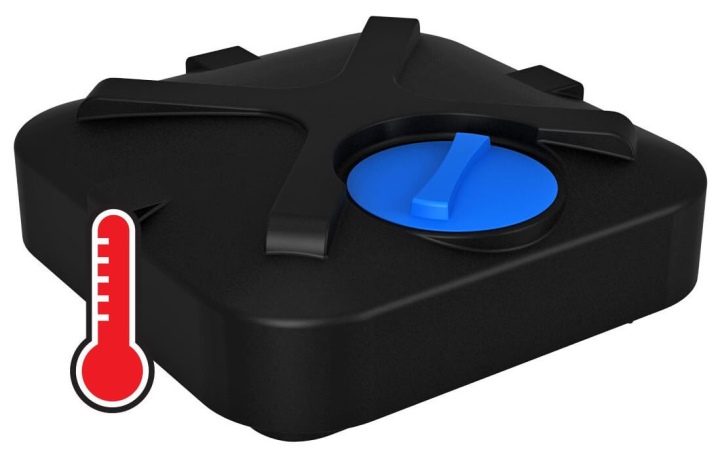
- Rostok 200 l equipped with a hose and a watering can (included in the kit). The analogue is flat, which allows you not to install an additional roof deck in the shower. Another analogue allows you to relieve pressure (or vacuum) using a valve installed at the top of the cover.
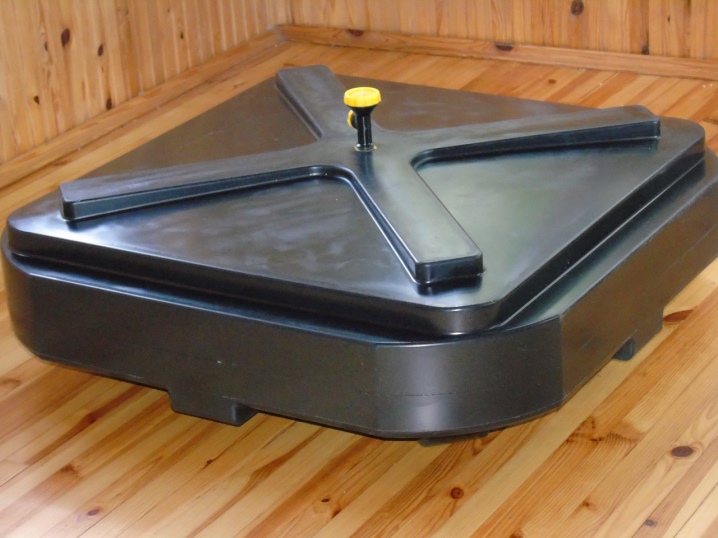
- Rostok 110 hp Contains a watering can included. Rapid heating of water.

- "Dew" with lid and heating - POLIMER GROUP model for 110 l, black color. Equipped with a thermocouple heater. The installation of the heating element allows it to be constantly in the water - and not to burn out when the water runs out, since a small amount of water not drained from the tank will close the spiral heater.

A significant number of models are presented on the domestic market for bath accessories - up to several hundred. Choose the right one using the recommendations outlined in the previous paragraphs.
Components and accessories
The delivery set of many models includes the following components: a faucet, a stand for fastening, a shower head, hoses, clamps, and so on. Home craftsmen who have come out of various unenviable situations with a high-quality solution to the current problem, in this case, may not spend additional money on a more expensive kit, which already has everything.
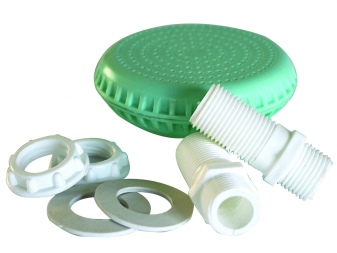
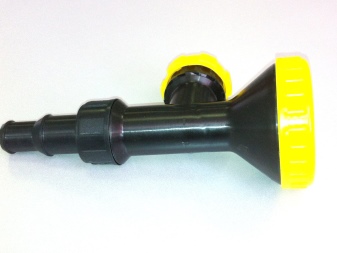
The main thing is that the tank does not crack during manipulations. Choose a container made of high-quality, unbreakable plastic, easy to process: this will help to embed both pipelines, fix the tap and hoses / pipes yourself. Experience shows that the most reliable option is to insert reinforced plastic pipes, which are used for heating and cold water supply, and taps, adapters, elbows, tees and couplings can be purchased at any building store nearby.
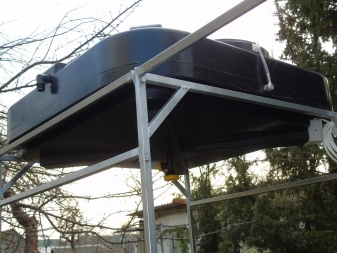
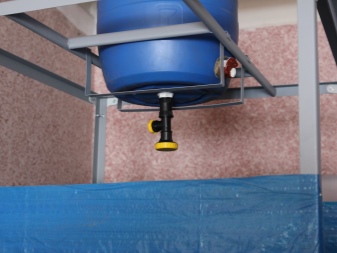
Selection Tips
In addition to the above recommendation for the choice of plastic, pay attention to the following characteristics of the tank.
- Capacity - is chosen sufficient so that people living in the country have enough water to wash with relative comfort. So, for four people, a 200 liter tank is suitable (people of medium build and height).
- For an outdoor (outdoor, on-site) shower, you will need a container with ultraviolet and heat-resistant plastic. Try to find the best option - do not save: an expensive tank will pay off much earlier than you think.
- A truly convenient tank - one that is easy to install alone, especially when the owner of the dacha lives alone for some time.
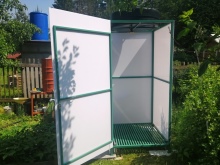
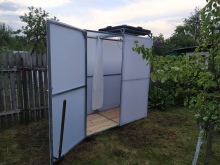
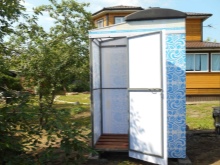
If you are not inclined to work with your hands for a long time and a lot, and such work is not your vocation and pleasure, then use the models of the tanks, to which all the necessary spare parts are included in the kit, and for assembly there is a step-by-step explained instruction. This saves a lot of personal time.
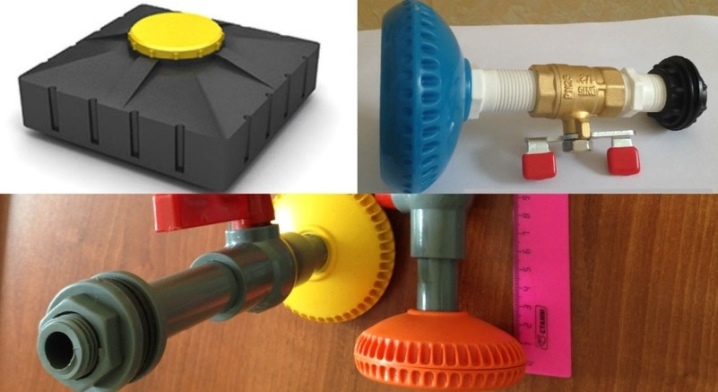
Otherwise, a cheaper tank is bought - without components - but no less high-quality (in terms of the type of plastic, thickness, its resistance to cracking) tank.
How to install?
A do-it-yourself outdoor shower can work even without running water. A well with a pump, and a well system, and even a storm drain, which collects all the water from the roof during rain, will cope with filling the tank. The latter option for rural areas - especially when moving away from cities - is attractive: rainwater is purified by nature itself, does not have excessive hardness.
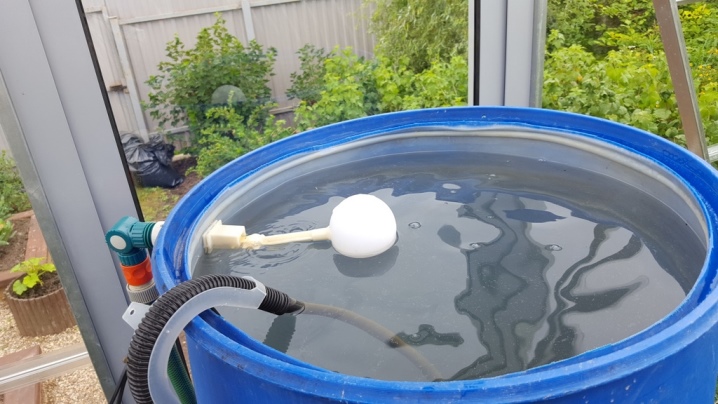
The tank can be fixed on a flat or sloping, sloping roof - provided that it does not slip out of the wind from there at the most inopportune moment. Installation on a roof made of corrugated board is not recommended: corrugated, "trapezoidal" roofing iron under a significant weight exceeding 300 liters, can be crumpled. Use a separate steel support, installed next to the house or at a distance, within the site.
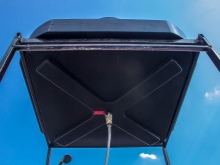

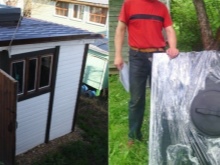
To install such a structure, do the following.
- Digging holes under the pillars - to a depth exceeding the level of soil freezing by at least several tens of centimeters. These holes are lined with waterproofing - for example, roofing felt - from the inside, to the height of the underground part of the pillars.
- Pillars are inserted - professional steel, "square", for example, 50 * 50, with a wall thickness of 3 mm.
- Sand is poured into each hole - 10 cm. A sand pillow is needed for any structures - even pillars, even blind areas.
- Fill in 10 cm of gravel. It will increase the rigidity of the base.
- Ready-mix concrete is poured (grades not lower than M-400) - to the height of the ground surface. As the concrete is poured, the pillars are aligned with the level gauge - in accordance with the absolute verticality, from all sides. For visual (rough) trimming, you can use "aiming" vertically at the street poles of power lines surrounding your plot, other houses, a fence previously installed by you (or neighbors), and so on. But exact alignment - checking against the level gauge - is a must.
- After waiting (6-12 hours) for the concrete to set, water it every day, every 1-4 hours (depending on the weather): additional water will allow it to gain maximum strength.
- Weld up horizontal - longitudinal and transverse - crossbeams from the same professional steel. To strengthen the structure, diagonal spacers are used. And so that it does not stagger, weld the same horizontal lines from below and reinforce them from the sides with diagonal spacers (the same as above).The frame for the new shower stall is ready.
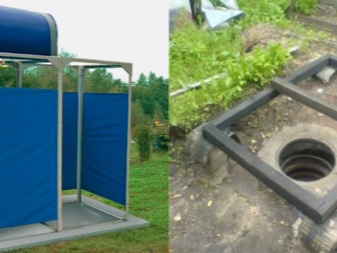
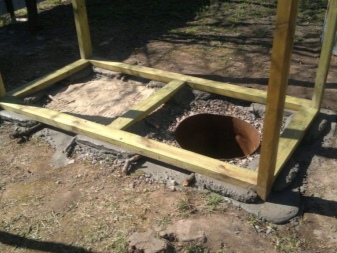
Now you can install the tank, carry out water supply with shut-off valves, install a shower head with a tap. To top it off, the sides and rear are sheathed with matt polycarbonate or plexiglass.













The comment was sent successfully.